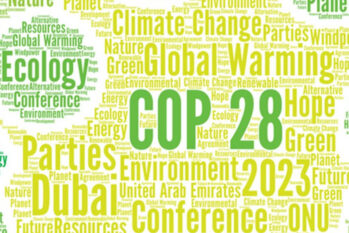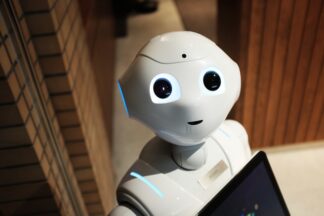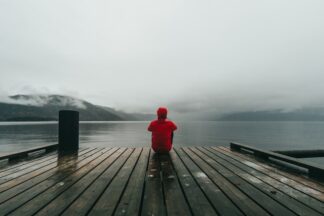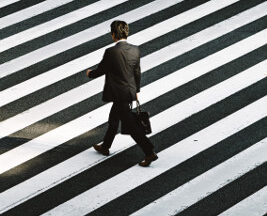COP28 yielded mixed results, featuring some historic 'firsts' such as a fossil fuel phase-out commitment, a $700 million loss and damage fund, the recognition of nuclear energy, and (this is huge!) a pointed spotlight on food systems' role in adaption.
Most of the old challenges though remain: It's all carrots and no sticks. Which shows in the continued absence of enforcement of Climate Targets or their stringency, and the eye-level conversation with Global South nations.
How does digitalisation impact and link to corporate responsibility? This is the question we look into in this post.
Combining the two disciplines results in a range of interesting questions. For example: If humans create non-human agents (e.g. in the shape of AI): For what, towards whom are these responsible? And: are they responsible at all - or is it their creator who is?
Knowledge and data are two interesting entities: essential for decisions at any one time. And yet evolving with time. And with that, decisions taken some time ago, possibly decades earlier, may prove flawed – in hindsight.
But what if years down the road these insights are resurfaced and either proven to be partially or fully inaccurate? What if the nuggets are suddenly being used in a context that has shifted significantly since? What if our best intended and best-possible informed statements of the past are called out years, decades later?
A few thoughts on this dilemma.
It is quite astonishing: all the different contexts that the term ‘circularity’ or ‘circular economy’ is being used. They key point mostly is of course the waste reduction promises inherent in the term, and the subsequent lower dependency on finite resources.
But, in addition to reducing waste, carbon – or rather carbon footprint – is a key factor.
Unfortunately, the reality is sobering: taking fashion as example, at best between 3% and 6% of the industry's carbon footprint could be remedied that way.
And even worse: in order to realise the potential, three fundamental hurdles must be addressed. Some efforts are underway, of course, but a steep hill remains to climb.
Research has known for a while that when someone in your presence is trying to think, much of what you are hearing and seeing is your effect on them. That is also the case for boards.
Because: under the right conditions and circumstances, people will – invariably – think for themselves. Just: is that desired?
The more time I spend ‘doing sustainability’, i.e. being involved both as a professional as well as as an individual in cajoling, motivating, convincing and helping companies – and the individuals therein - to become ‘better citizens’, the more I realised that … actually, in would not be that hard to do better.
Or let me reformulate more accurately: it is equally hard as many other things in businesses.
Italy. Known for the style of its inhabitants, the quality and sharp cut of its suits, the inventiveness of its fashion designers, the quality of its fabrics. Yet, if we were to talk sustainability in textiles and fashion, what is going on on the ground?
The design stage is usually the longest, most expensive and riskiest part of the chain. Additionally, research has shown that at least an estimated 80% of a product's environmental (and to a lesser degree also social) impact is locked at the design stage into a product. By integrating the product design with the supply chain, companies can compress non-value adding time and costs in their supply chains, increase responsiveness and mitigate supply chain risks – while simultaneously managing (improving) their sustainability performance without added costs or efforts.
At Shirahime, we have worked quite extensively over the last few months on the development of fashion industry scenarios beyond the 2020 time frame, going as far as 2045.
We mentioned for example Shell as one that used this approach to suit their own goals.
Siemens' 'Future Life' video, as presented the The Crystal in London.
A much more interesting approach, and very insightful in terms of methodology, but also how tangible the results are presented, is Siemens’ work on Future Cities
For retail, Brazil is the ‘next hot’ place to go to.
For a variety of reasons: For one, the country’s economy has been for a long time up and raising. Brazil is one of the 4 BRIC countries – the 4 most dominant raising economies, and ranks forth among them. Its retail sector is expected to boom tremendously over the next few years owing largely to the two major global sport events – the 2014 FIFA World Cup and Rio 2016 Summer Olympics that will take place in the country.
Sustainability practitioners tend grow a fairly thick skin over time with regards to how their work is valued. Chances are that if you move in a field of expertise that marginally relates to CSR that you'll a surprising selection of comments, that display a lack of recognition.
In the fashion industry we’re very taken to ‘trend’: the colours, cuts, styles, fabrics of the next couple of seasons or so. Yet few venture to think about how their very own industry will look like in, say, 2020 or beyond. Resting the case for the importance of building scenarios of the long-term future.
Does sustainability, or not, impact share price? Does it, or not, make for a profitable bottom line business case? Does it, or not, help increase efficiencies? Here the insights from research, and what they mean.
2045: scenarios for the textile and fashion industry: How will the industry look like in 5, 10 and 30 years time? Scenarios offer research-based insights, and potentially can show how realistic a world is, that looks rather quite different from what we're used to. What if Asia become today's Europe? What if we did not buy to own? What if everyone was a maker?
Adidas was the first sportswear company to report on sustainability in 2000 following its first Standard of Engagement (SoE) in 1998. Allegations of sweatshops in their supply-chain preceded this move.
The latest 2012 report is now out - what is does it say?
North Italian fabric manufacturer Bonotto is returning to their roots and at the same time giving luxury fashion fabrics a new lease of authenticity and craftsmanship.
For their ‘Fabbrica Lenta‘ (the slow factory) range, they have unearthed the looms as well as dye techniques their district made its name with in the early 20th century.
C&A, part of the Cofra Holding that owns C&A Europe, Brazil, Mexico and China, has been a family business since 1841.
The company is quite conservative in communicating corporate responsibility achievements. Their style of communication appears to be more emotional than factual.
The company has been awarded the Textile Exchange Future Shaper award in 2012 recognising the company’s commitment to promoting the analysis and certification of organic cotton and textiles.
PASS THE BATON is a new type of recycle shop with two locations, in the center of Tokyo. It cherishes the emotional bound that both, previous and new owner have with the item, fostered by a carefully curated setting.
If there is an area of fashion that is truly pushing the boundaries of what is technically and style-wise possible, then it is Haut Couture.
In January 2013 2 pieces among Iris van Harpenr’s 11-piece collection at Voltage show attracted the interested of fashionistas as much as product techies: The first ever wearable dresses created through a 3D printing process.
The world of sustainability in fashion has changed fundamentally in the last few years. In this article we look at qualities that leaders such as Patagonia's Yves Chouinard have, that make them the movers and shakers of the sustainability agenda in the industry at large.







